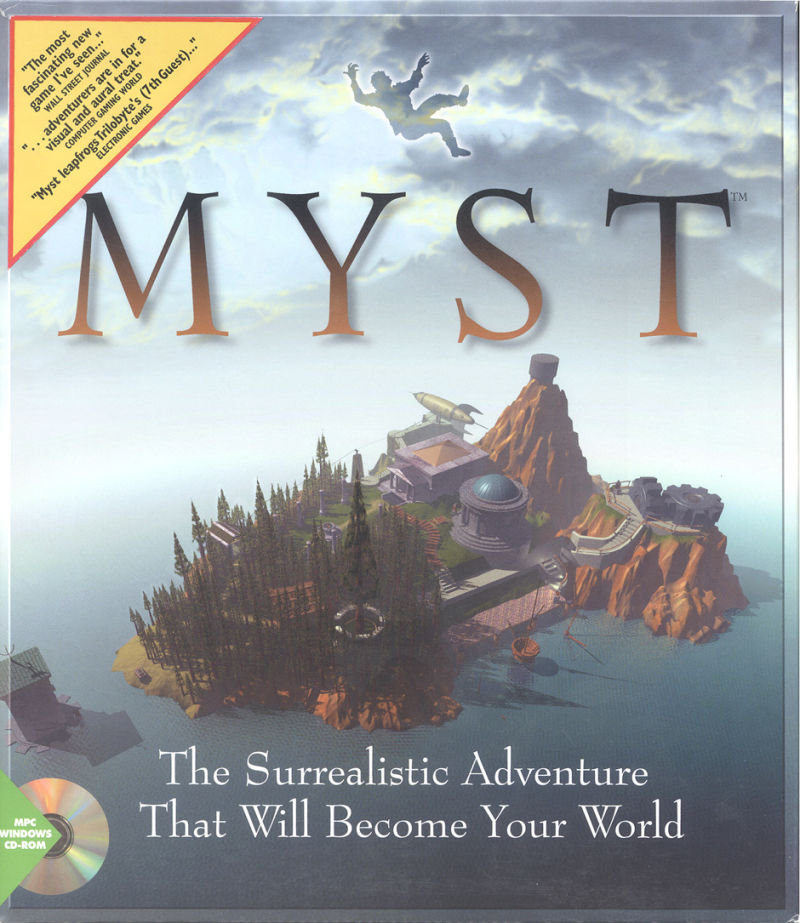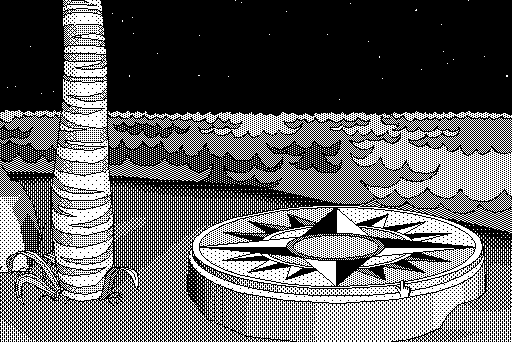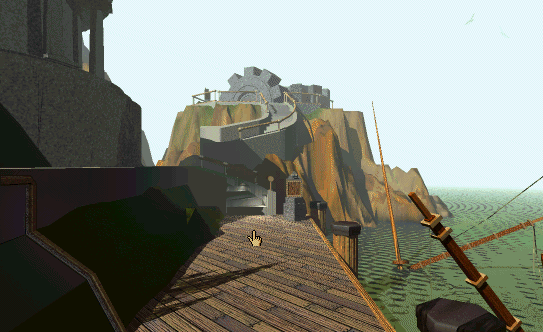For my response paper, I studied the cult game Myst, which was developed by Cyan and published by Brøderbund. First released on 1993, Myst was ported to multiple platforms ever since and had reached a broad audience. Novel approaches to topics such as gender, body image, and narrative incentivised a wide range of demographics to play the game.

In the game Myst, the player controls the character known as the “Stranger,” who was thrown into an island upon finishing a book that is describing the island of Myst. The plot revolves around exploring and trying to escape the island: Red and blue books found in each of the ages (in Myst world they could be treated as levels), and each book contains a story about two brothers that are imprisoned in the island; Sirrus and Archenar. The player faces moral decisions of selecting whom to help, as two brothers blame each other for ending up in prison. Solving puzzles to reach to the final ages, the player finds another green book, which leads to another world D’ni, in which Sirrus and Archenar’s father Atrus is imprisoned. The non-linear storyline provides multiple endings; in which player could be imprisoned by being deceived by one of the brothers, imprisoned in the D’ni world with Atrus, or helping Atrus to return to the island of Myst; destroying the two evil brothers.
One of the Myst’s unique features that are deviant from its counterparts in the medium of videogames is that it features higher-quality images. Myst pushed the limitations of the visual quality to create an immersive virtual environment. Surprisingly, the techniques used were not in the domain of computer games. The creators of the game exploited the HyperCard software by Apple: Initially, HyperCard software, a predecessor of modern-day HyperText, which is designed as a productivity program revolving around manipulating data around a graphical user interface. The developers used these features to provide clickable images that are tied to game states, creating a unique narrative that is revolved around solving puzzles and navigating in a virtual environment without typing any text, which differentiates Myst from a typical point-and-click adventure. Another advantage of using the system was the elimination of real-time raster graphics. Therefore, the developers were able to plug-in high resolution pre-rendered images into the game. They used the same technique, but the images were hand-drawn and the applications were intended to children.

Initially, the virtual environment of Myst was also intended to be hand-drawn, but the decision of coming up with full 3D models created an immersive imagery that was powerful enough to create memories of a non-existent place in the minds of the audience. The bold decision on the digital imagery that went beyond the boundaries of the videogame medium in 1993 provided a paradigm shift by introducing computers as the perfect host for virtual fantasy environments, at a time when pen&paper, tabletop Fantasy Role-Playing games were the dominant media. Even though Myst is an adventure game with puzzle elements, many videogames in the FRP and RPG genre, including Baldur’s Gate and Icewind Dale series, followed the pre-rendered 3D aesthetic in the late 1990s: Myst was not just a genre-definer in terms of aesthetics, it drove the whole medium of videogames.

The Romanesque architecture with a touch of Gothic inspirations is a significant contributor to the unique materiality offered by the game. The puzzles allowed players to manipulate the world in which the game takes place in. The cognitive mapping of the virtual environment was required to progress in the game. Therefore, the experience is a convincing one as if the adventure takes place on an abandoned island. The non-linear narrative which is free of violence, combined with the ambient music communicates the sense of loneliness to the player. Back then, a game with a first-person view is usually regarded as one in which player recklessly shoots enemies as it was in Doom or Quake. Pushing the technical limits of the audio and visual imagery, the game is a pioneering application that uses the CD-ROM technology. The user interface was lean and did not have any superfluous elements: All of the screen space is used to show the imagery, with an exception of superimposed mouse cursor. The innovation eliminated many of the frictions in order to interact with the environment: Earlier text adventure games required user to input statements for interaction.
In terms of the protagonist and its representation, Myst prefers to hide any hints about the main character. Also, during the game, we never hear the protagonist speaking during videos and cutscenes. Therefore, concealing a unique body revealed a character that is gender-free. A neutral creature without any violent actions allowed the audience to adopt the role of a generic persona. This was also a manifestation against the usual stereotypical “boy saves the girl” or “a man saves the entire humanity” stories that were plagued the medium of videogames. During the decade, it was the case that protagonists had an avatar and a personality that the player can not escape to assume. An extreme opposite end of the neutralness that is offered by Myst could be the Duke Nukem, in which the protagonist is concretized by a not-so-inclusive vituperative muscular male figure. By not exposing the player to a particular body image, Myst breaks down a barrier of communication with the game world; allowing players to experience their own adventure alone in an abandoned place.
Myst used all the technology of its era; multimedia, high-resolution images, music and sound effects. Yet, the unique features and design that was first of its kind helped it to become a game that is considered as a piece of art. The unique blend of interactive storytelling, puzzle-solving, and the sense of agency in manipulating a virtual environment demonstrated how a videogame can be differentiated from an action movie. The success of the game paved the way for similar titles; Dear Esther, The Witness, and Gone Home to name a few. Communication of the game world was made via puzzles, which are priorly used only as pacing paradigm in the process of game design. The exploration of the game environment not just provided with bonus points to collect; it unfolded a story. A mindful experience that is created upon the foundations of videogames constituted a piece of art whose impact is still present two decades after its release, Myst was ahead of its time.
Leave me a Comment